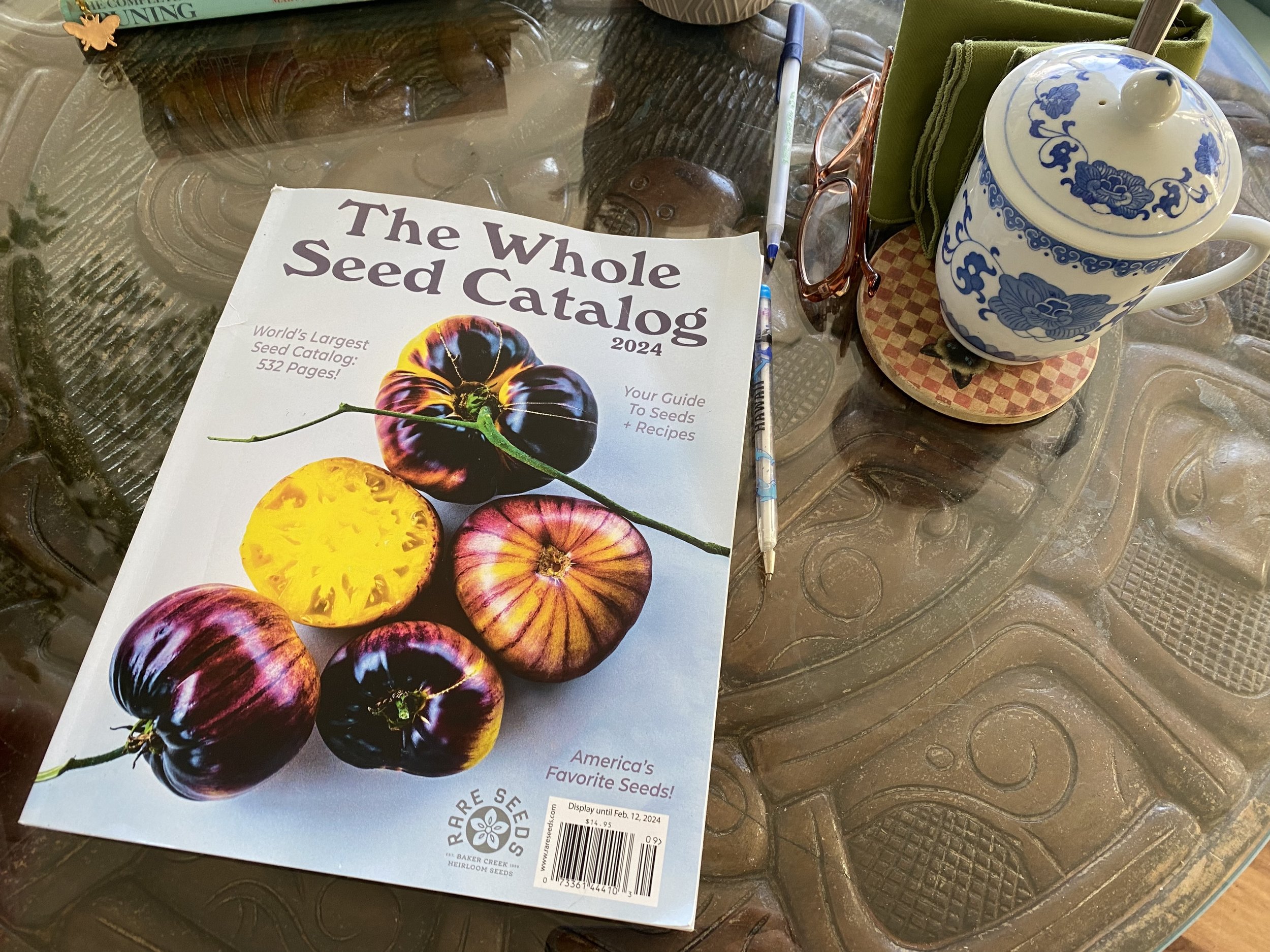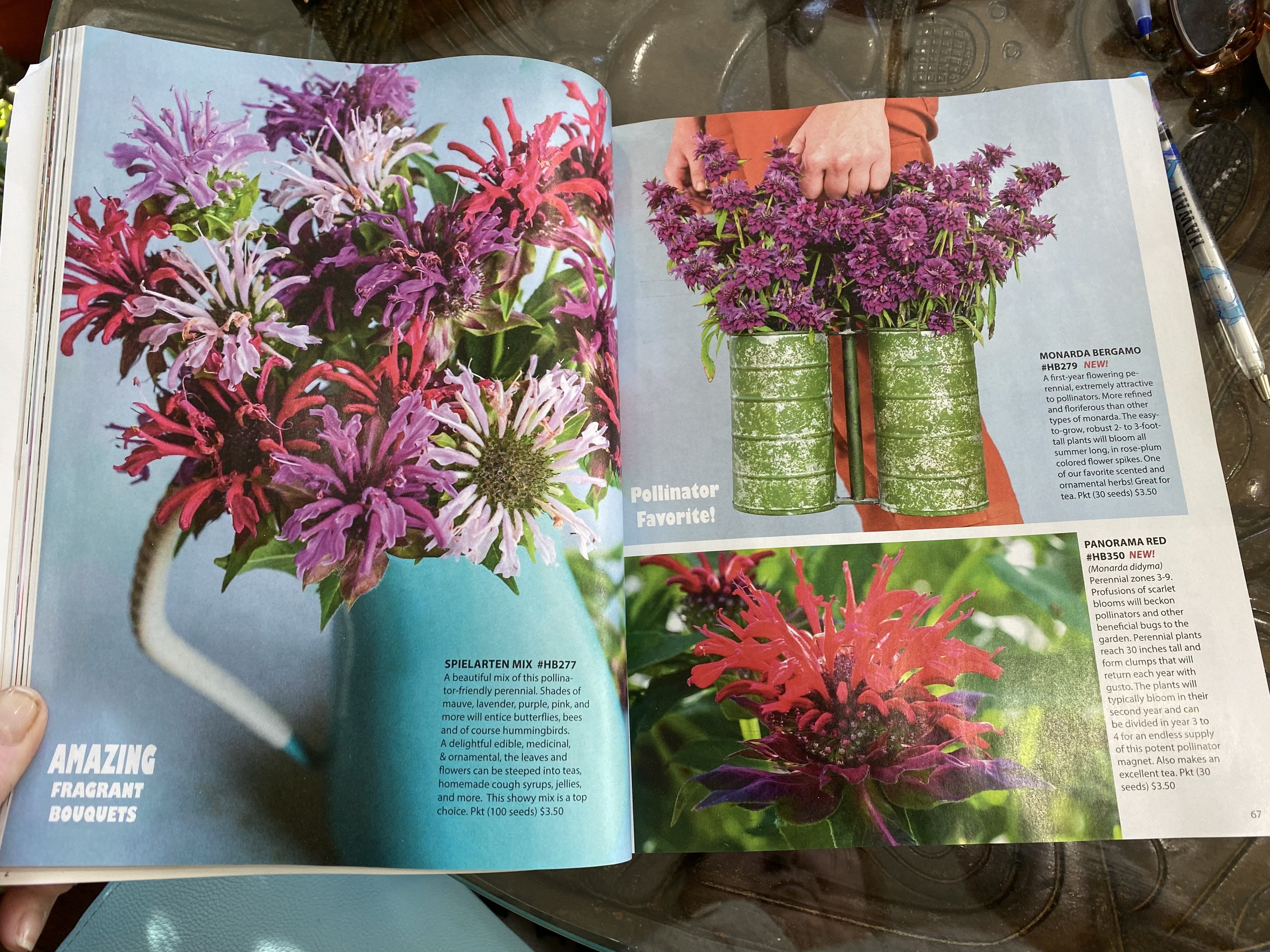World's Largest Seed Catalog
/My birthday gift to myself this year was paying $14.95 for a seed catalog. This isn’t just any seed catalog, it’s the world’s largest seed catalog. (charlotte ekker wiggins photo)
World’s Largest Seed Catalog
One of the ways gardeners prepare for a new season is by getting catalogs. Even in years when I didn’t have much time for my garden, my cold winters were brighter curled up with a pile of garden catalogs.
This year, I treated myself to the world’s largest seed catalog, more than 500 pages of beautiful plant photos sprinkled with recipes.
one of the hallmarks of this catalog is their lovely photography. (charlotte ekker wiggins photo)
The catalog is from Baker Seed Company, a Missouri business focused on offering heirloom seeds from around the world. Based in Mansfield, Missouri, the company sponsors a yearly festival in May, which is usually the last hard frost of the season for our area.
From their website:
“Founder Jere Gettle started Baker Creek Heirloom Seed Co. in 1998 as a hobby, and though it has since grown into North America's largest heirloom seed company, we've never lost our passion for growing and sharing heirloom varieties. Baker Creek offers one of the largest selections of 19th century heirloom seeds from Europe and Asia, and our catalogs now feature about 1,000 stunning heirloom varieties.”
some of the nectar-producing plant seeds baker creek offers. (charlotte ekker wiggins photo)
To no one’s surprise, I check for plants that provide bees and pollinators food.
If you have someone in your circle interested in getting started gardening this year, Baker Creek also offers a smaller, 163-page free catalog. It’s a great addition to a basket with gardening gloves, pruners and a couple of seed packets to cultivate the gardening interest.
For more gardening, beekeeping, cooking and easy home decor tips, subscribe to Garden Notes.
Charlotte


















